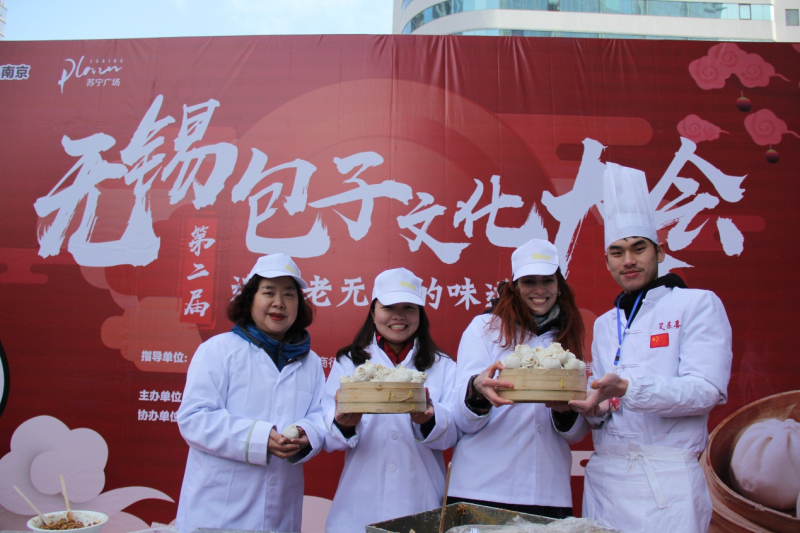 |
|
The participants of the second Wuxi Baozi Culture Convention showcase their hand-made xiaolongbao. [Photos provided by Fang Luofan] |
Hosted by the Wuxi Cuisine Association and Modern Express (a popular newspaper in Jiangsu province), the convention was a major public relations event for Wuxi's unique and prosperous baozi culture. The first convention took place in Dec 2016, with more than 10,000 buns being sold on site.
This year's event featured Wuxi brands of small buns such as Wangxingji, Xishengyuan, and Xiaolaixi, as well as big bun brands including Hongyun and Mu Guiying. Many of these old restaurants have been passed down for many generations without interruption. The buns were made by chefs on the street and sold with great discounts and gift vouchers. Despite a freezing temperature, consumers queued up at each and every stall.
Baozi (steamed buns with stuffing) are a traditional Chinese street food dating back to the 3rd century AD. They have been popular in most parts of the country ever since. The dish is commonplace in many Southeast Asian countries due to longstanding Chinese immigration. While Baozi can be eaten at any meal, it is often a staple food for breakfast and is often purchased for take-away.
The fillings and cooking methods of baozi vary in different parts of China. However, xiaolongbao, a small meat-filled juicy baozi characteristic of the Yangtze River Delta, is arguably the most popular and highest-rated type across the country. Wuxi xiaolongbao, which was once tasted by Emperor Qianlong (1711-1799), stands out for its longest history and sweet flavor.